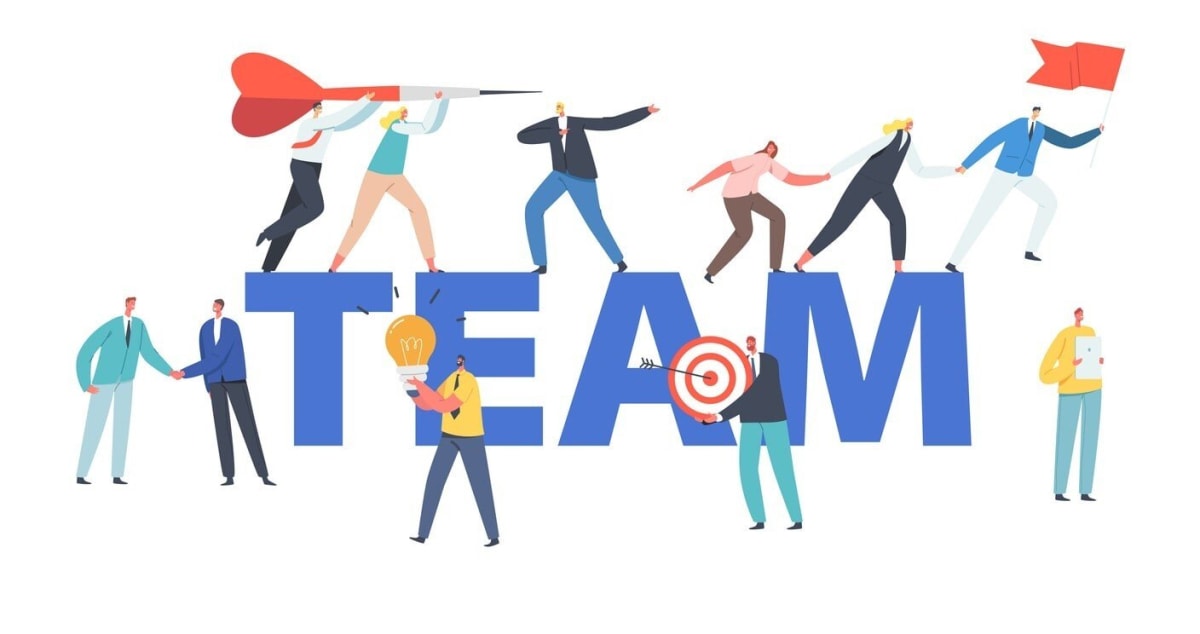What if stepping away from the office for a few days could bring your team closer, spark new ideas, and recharge everyone’s motivation? A well-planned company retreat is a powerful way to build stronger connections, boost morale, and unlock creativity. In this guide, you’ll find everything you need to plan a retreat that actually makes a difference.
Key Takeaways
- Company retreats boost morale and team bonding, offering a unique space for collaboration and innovation.
- Planning a retreat needs clear objectives, a detailed budget, and effective communication to ensure a successful experience for all team members.
- Post-retreat follow-up, including gathering feedback and celebrating successes, is crucial for maintaining the momentum gained during the event.
Understanding the Purpose of a Company Retreat

A company retreat serves as a strategic investment that can enhance productivity and morale in profound ways. With remote work on the rise, corporate retreats solve the connection crisis by offering a new space for team bonding and collaboration. The primary goals include team bonding, brainstorming, and developing relationships that strengthen the social fabric of teams, making it essential to explore various company retreat ideas.
Moreover, retreats offer a balanced mix of strategic thinking, relaxation, and professional development. High morale during retreats can spark new energy among team members, paving the way for innovative ideas and renewed enthusiasm. A well-organized retreat leaves teams feeling more connected, motivated, and prepared to tackle upcoming challenges together, making it one of the best retreats.
Defining Goals for Your Corporate Retreat
Clear objectives from the start ensure your corporate retreat aligns with organizational goals. Whether it’s:
- fostering team bonding
- setting new sales goals
- brainstorming innovative solutions
Having a clear focus will guide your planning process and help achieve a successful retreat.
Choosing a theme can also align your team and focus on specific objectives. If enhancing problem-solving skills is the goal, including team challenges like escape rooms or team-building games can be highly effective.
Tailoring retreat activities to your team’s dynamics ensures a memorable and impactful experience.
Who Should Plan the Company Retreat?
Planning a corporate retreat requires careful consideration of roles and responsibilities. To ensure all details are managed effectively, consider the following:
- Designate a planning team or individual to oversee the organization.
- Include diverse perspectives in the planning team.
- Incorporate input from different team leaders.
- Involve HR personnel to create a well-rounded retreat.
Engaging team members in the planning process enhances the retreat experience. For a fully remote company, leveraging virtual retreat planning tools and resources can streamline the process, ensuring that even remote employees feel included and engaged in the upcoming retreats.
Budgeting for Your Retreat
A well-structured budget is essential for a successful retreat. It should include:
- Costs for the venue
- Food
- Transportation
- Contingency funds to cover any unexpected expenses
If you're thinking about doing a one-day retreat, good news! It can save you a lot on things like accommodations and catering. You can stretch your budget even further by bundling services, asking venues to throw in a meeting room for free, or booking during off-peak times when prices are lower.
To keep things running smoothly, make sure the basics are covered: fast WiFi, a few meeting spaces, and solid food options. And don’t forget the little things, having backup plans for weather, tech hiccups, or dietary needs can go a long way in making the day stress-free and enjoyable for everyone.
Steps to Planning a Successful Company Retreat

Planning a successful company retreat involves several key steps, each contributing to a seamless and productive experience. Utilizing resources such as a free ebook on planning can streamline the process and help ensure all bases are covered. Hiring a professional event planner can also alleviate stress by managing logistics, venue selection, and itinerary planning.
Post-retreat success hinges on maintaining momentum by planning future steps for team building. Effective follow-up involves establishing action plans and assigning responsibilities to ensure insights from the retreat are utilized. This comprehensive approach ensures that the benefits of the retreat extend well beyond the event itself.
Selecting the Perfect Venue
Selecting the perfect venue is critical for a successful corporate retreat. The location should impress the team and foster an environment conducive to idea generation and connection building. A retreat is essential for team bonding among remote teams. It also helps improve employee engagement.
Factors such as team needs, company requirements, and the nature of the retreat, whether it’s a one-day or multiple-day event, should influence your venue choice. Consider outdoor venues like parks, nature reserves, and farms for one-day retreats.
Booking the venue 8-12 months ahead secures the best rates and ensures it meets essential needs like WiFi and meeting spaces.
Creating a Detailed Agenda
A detailed company retreat agenda is crucial for using time effectively during the retreat. It should balance business activities, team-building exercises, and free time to ensure a comprehensive and enjoyable experience. Incorporating a variety of activities will help engage all team members and foster a sense of inclusion.
Fun activities that can enhance team bonding and collaboration include:
- Game nights with favorite board games, which enhance team bonding.
- A welcome party, which can set a positive tone for the retreat.
- Indoor activities such as escape rooms and team trivia.
For remote teams, getting everyone together in person for three to five days is totally worth it. Since you usually only connect for a few hours each week, an extended retreat gives you the time and space to really connect, collaborate, and make the most of being in the same place.
Communicating Details Early
Clear, early communication about retreat details helps avoid confusion and ensures everyone is informed. Final details should be shared at least one month in advance to give team members ample time to prepare.
Using engaging videos and teasers can help build excitement among team members ahead of the retreat. A company-wide Wiki, Q&A sessions, and retreat-specific Slack channels ensure effective communication.
These strategies will help ensure everyone is well-informed and ready for an engaging and productive retreat.
Engaging Team Building Activities

Team-building activities are essential for boosting collaboration and building camaraderie among team members. Activities can range from strategic work sessions to creative cooking classes and outdoor adventures, all designed to foster teamwork and help employees connect.
Examples of engaging activities include:
- Forage-to-feast challenges at Blackberry Farm
- Group desert challenges at Red Mountain Resort
- Inter-department sailing regattas at The Tyler Place Family Resort
Incorporating a mix of activities ensures that all team members are engaged and that the entire team has a retreat experience that is memorable and impactful.
Outdoor Adventures
Outdoor adventures provide an excellent opportunity for team bonding and excitement. Team sport, nature hikes, and charity work foster unity and collaboration among team members. Unique outdoor activities like challenge courses, ziplining, snorkeling excursions, and scavenger hunts can also encourage engagement and teamwork.
Hiking and bike tours offer a great way to explore nature and connect as a team, while water-based activities like kayaking add an adventurous twist to the retreat. These activities offer fresh air and fun while creating lasting memories and stronger team bonds.
Creative Workshops
Creative workshops are another fantastic way to foster team bonding and creativity. Examples include:
- Culinary challenges, such as creating meals from specific ingredients, which promote creativity and collaboration.
- Seasonal cooking classes offered by venues like Twin Farms.
- Garden-to-table cooking challenges at The Lodge at Woodloch.
These provide fun and engaging team-building activities.
Art classes and cocktail-making workshops are also excellent options. These workshops let team members express creativity, collaborate artistically, and enhance skills while having a great opportunity to have fun.
Creative workshops not only foster innovation but also strengthen team dynamics and morale, encouraging creative thinking and new ideas.
Fun Indoor Games
Fun indoor games play a crucial role in building camaraderie and enhancing team spirit during company retreats. Trivia nights, for example, encourage friendly competition among team members and create a relaxed and enjoyable atmosphere. Playing these games improves team dynamics and relationships, making the retreat more enjoyable and productive.
Organizing a game night with a variety of board games or participating in escape rooms can also foster collaboration and a little friendly competition. These activities are not only fun but also help build teamwork and allow employees to get to know each other better.
Tips for Hosting an Inclusive and Enjoyable Retreat

Hosting an inclusive and enjoyable retreat requires thoughtful planning and attention to individual preferences. Here are some key points to consider:
- Communicate early and clearly about retreat details to reduce anxiety among team members and ensure everyone is well-informed.
- Encourage, but don’t mandate, participation in activities.
- Allow team members to choose what interests them.
Incorporating walking meetings during the retreat can lead to improved discussions and relationship-building. Effective retreats focus on fostering meaningful human connection among participants, creating a positive and inclusive atmosphere.
A post-retreat debriefing session lets teams reflect on their experiences and discuss improvements during collaborative sessions.
Catering to Diverse Preferences
Catering to diverse preferences is crucial for ensuring all attendees feel included and engaged. Some ways to achieve this include:
- Offering optional activities like tequila tastings and brewery tours for fun choices.
- Allowing remote team members to join via videoconferencing.
- Providing gift cards for meals or activities to help remote attendees feel included.
Setting up tasting menus with small samples of various foods allows team members to explore new cuisines, while sharing meals together enhances team bonding. Offering diverse options in activities and meals helps ensure that all attendees feel included and engaged.
Balancing Structured Activities with Free Time
A successful retreat agenda should balance structured activities with enough free time for relaxation. Key components include:
- Casual social times during the retreat
- Downtime to ensure a relaxed environment
- Organizing a picnic lunch in a nearby park
- Outdoor activities such as volleyball, golf, or climbing
Exploring a new city on foot, visiting museums, and participating in art walking tours are also great ways to balance structured activities with free time. Casual downtime during activities ensures everyone feels comfortable and included.
Ensuring Safety and Comfort
Safety and comfort are essential for participants’ well-being during the retreat. Key safety measures include:
- Establishing clear protocols for emergencies and unexpected events
- Deciding on the first aid resources available onsite
- Ensuring all leaders are trained in emergency procedures
Prioritizing safety fosters a culture of care and trust, leading to a more productive and enjoyable retreat experience. Thoughtful planning lets team members relax and focus on building meaningful connections and achieving retreat goals.
Post-Retreat Follow-Up

The success of a corporate retreat doesn’t end when everyone goes home. Post-retreat follow-up is crucial to capitalize on the momentum and insights gained. Gathering honest feedback through surveys and discussions is crucial to evaluate the retreat’s effectiveness and identify improvements. This step ensures that future retreats are even more aligned with the team’s needs and expectations.
Recognizing and celebrating achievements and positive outcomes reinforces the retreat’s value and motivates the team. By implementing insights gained from the feedback, companies can continue to build on the retreat’s success and foster ongoing collaboration and team bonding.
Gathering Feedback
Collecting post-retreat feedback is essential for understanding what worked well and what could be improved. A post-retreat survey encourages team members to share honest opinions and candid responses. Anonymous surveys are particularly effective in gathering honest feedback and fostering open communication.
Use collected feedback to iterate and design better future retreats. For example, after implementing feedback, one company’s retreat ratings improved significantly from 8.87 to 9.5 out of 10. This continuous improvement process ensures that each retreat is more successful than the last.
Implementing Insights
Using participant feedback tailors future retreats to better meet team expectations and needs. Action items from feedback should have clear assignments and deadlines to ensure accountability. This structured approach ensures that insights are not only acknowledged but also acted upon, leading to meaningful improvements.
Monitoring the implementation of feedback helps track progress and identify areas needing further support. By continuously refining the retreat planning process based on participant feedback, companies can create more impactful and enjoyable retreat experiences.
Celebrating Success
Celebrating retreat successes fosters a positive culture and reinforces the value of team collaboration. Recognizing team efforts and achievements post-retreat encourages ongoing collaboration and reinforces positive behaviors. This recognition can take many forms, from a celebratory team lunch to public acknowledgment of specific contributions.
By celebrating success, companies can create a work environment where team members feel valued and motivated to continue working together towards common goals. This positive reinforcement helps sustain the momentum gained during the retreat and fosters a company culture of appreciation and collaboration, ultimately contributing to company success.
Summary
In summary, a well-planned company retreat can have a profound impact on team bonding, productivity, and overall company culture. By understanding the purpose of a retreat, defining clear goals, and involving the right people in the planning process, companies can create meaningful and enriching experiences for their teams. Effective budgeting, selecting the perfect venue, and creating a detailed agenda are crucial steps to ensure a successful retreat.
Engaging team-building activities, coupled with thoughtful planning for inclusivity and safety, create an environment where teams can connect, collaborate, and innovate. Post-retreat follow-up, including gathering feedback, implementing insights, and celebrating success, ensures that the benefits of the retreat extend well beyond the event itself. By following these steps, companies can host retreats that their teams will love and look forward to year after year.
The main goals of a corporate retreat are to foster team bonding, spark creativity through brainstorming, and build stronger relationships, all while boosting productivity and morale. It’s a great way to strengthen your team's connection and drive success together.
It's important to have a designated planning team, including various team leaders and HR personnel, involved in the retreat organization to cover all bases and make it a success. This way, you’ll ensure that everyone's perspectives are considered.
To budget effectively for a corporate retreat, make sure to account for venue, food, transportation, and set aside some contingency funds. Don’t forget to look for cost-saving strategies like bundling services and booking during off-peak times.
For a fun team-building retreat, consider outdoor adventures like nature hikes or team sports, along with creative workshops such as cooking classes. Mixing in indoor games like trivia nights or escape rooms can really boost engagement, too.
To ensure your next corporate retreat is a success, start by defining clear goals and putting together a detailed agenda. Don’t forget to communicate the plans early, gather feedback, and celebrate your achievements during the retreat.





